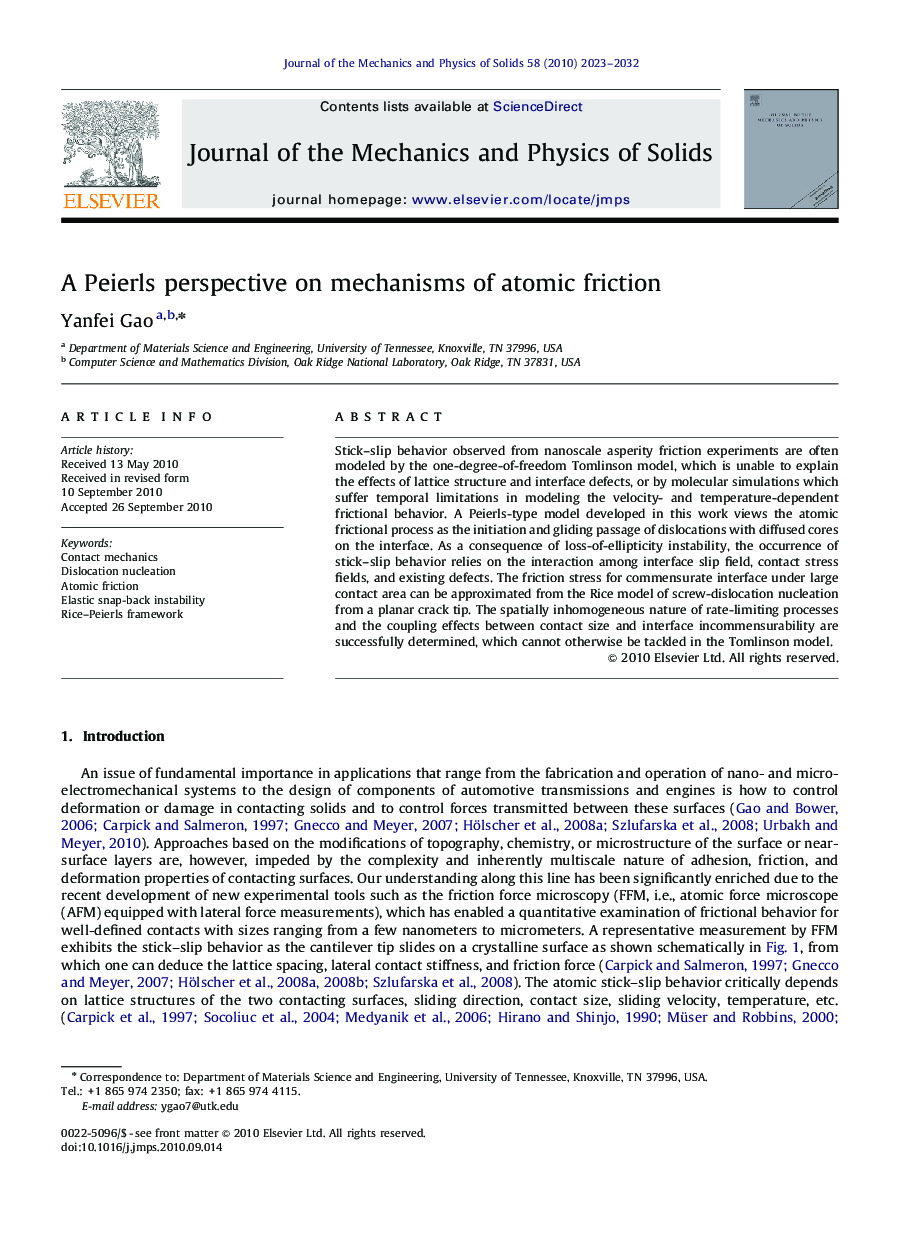| Article ID | Journal | Published Year | Pages | File Type |
|---|---|---|---|---|
| 798203 | Journal of the Mechanics and Physics of Solids | 2010 | 10 Pages |
Stick–slip behavior observed from nanoscale asperity friction experiments are often modeled by the one-degree-of-freedom Tomlinson model, which is unable to explain the effects of lattice structure and interface defects, or by molecular simulations which suffer temporal limitations in modeling the velocity- and temperature-dependent frictional behavior. A Peierls-type model developed in this work views the atomic frictional process as the initiation and gliding passage of dislocations with diffused cores on the interface. As a consequence of loss-of-ellipticity instability, the occurrence of stick–slip behavior relies on the interaction among interface slip field, contact stress fields, and existing defects. The friction stress for commensurate interface under large contact area can be approximated from the Rice model of screw-dislocation nucleation from a planar crack tip. The spatially inhomogeneous nature of rate-limiting processes and the coupling effects between contact size and interface incommensurability are successfully determined, which cannot otherwise be tackled in the Tomlinsonmodel.
